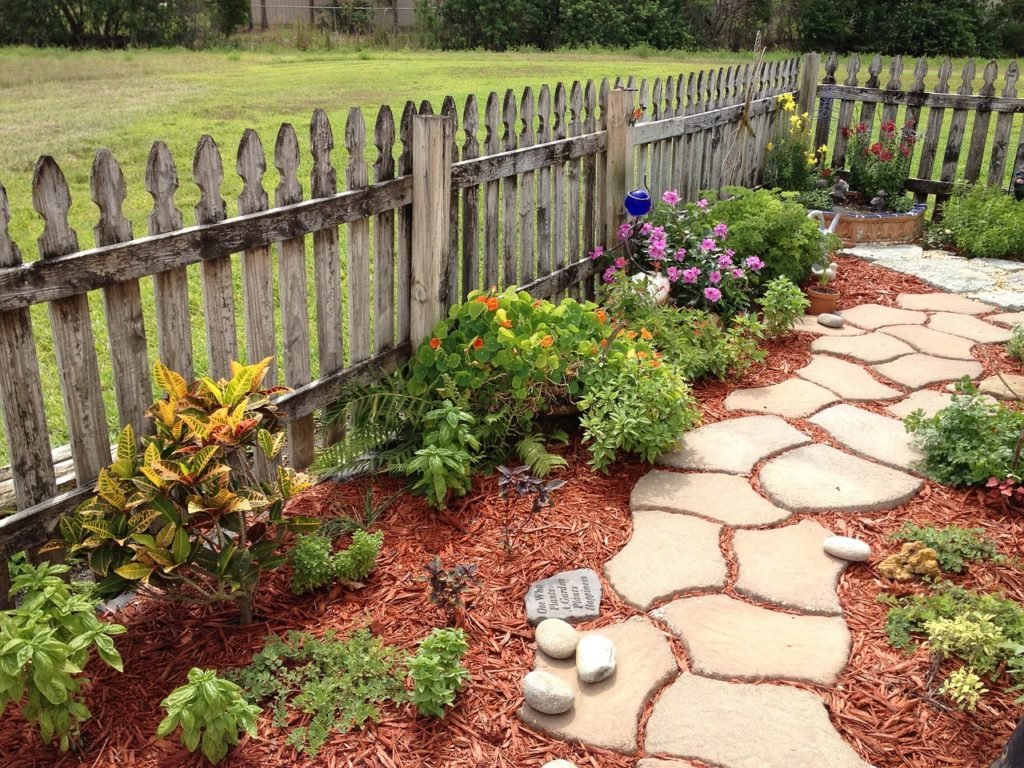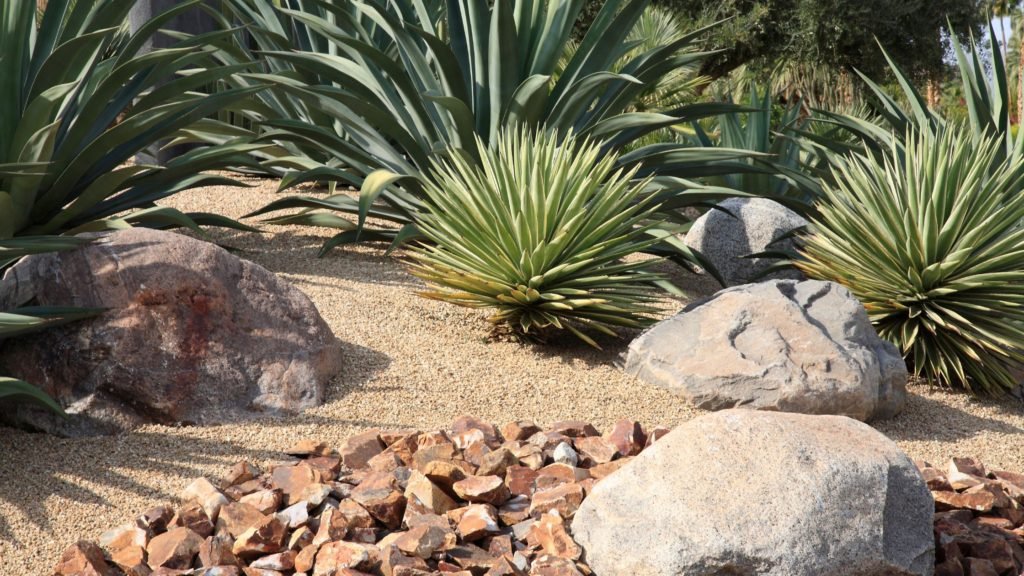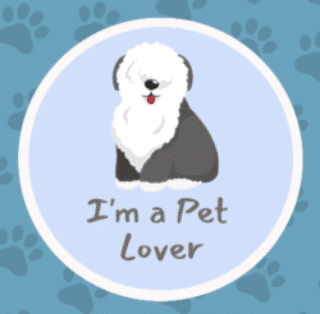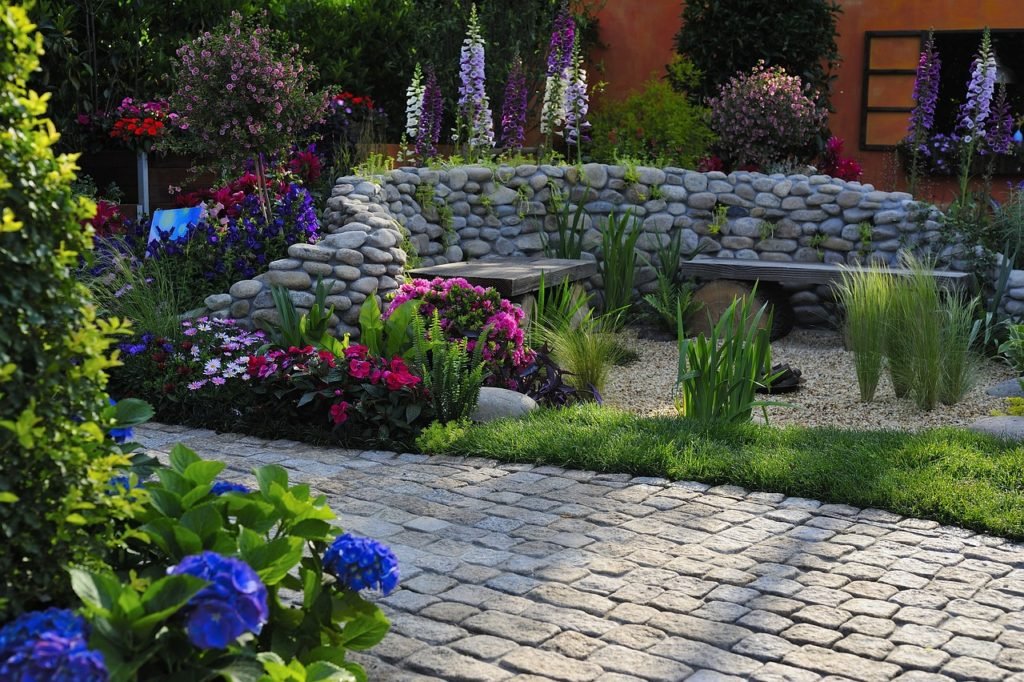Have you ever wondered, “What’s a dog friendly xeriscape backyard?” Picture this: a serene oasis that needs minimal watering, looks fantastic year-round, and is safe for your furry friend to play and lounge in. Intrigued? You’ve come to the right place.
As more and more homeowners turn to sustainable landscaping options, the concept of xeriscaping is gaining popularity. It combines water efficiency with a beautiful design while considering your pet’s needs.
Why Consider a Dog Friendly Xeriscape Backyard?
- Eco-friendly and cost-effective: Xeriscaping helps you save on water bills, contributing to environmental conservation. And who doesn’t love a little extra savings?
- Low Maintenance: Xeriscaped gardens require less maintenance, allowing you more leisure time with your four-legged friend.
- Safe and comfortable for your pet: We’ll share how to select non-toxic plants and create an inviting, safe space for your dog.
Understanding Xeriscaping
Xeriscaping is a technique that prioritizes water conservation. “xeriscape” comes from the Greek word “xeros,” which means dry. This approach involves carefully selecting plants well-suited to a region’s natural climate and soil conditions. By utilizing these native plants, xeriscaping minimizes the need for irrigation and reduces overall water consumption. This method is an effective way to create an eco-friendly and sustainable landscape design.

Key Elements of Xeriscaping
- Planning and Design: This involves studying your yard’s condition, including sunlight exposure, existing vegetation, and soil type.
- Soil Improvement: Different plants require different soil types. Once the plants are chosen, the soil should be amended accordingly.
- Appropriate Plant Selection: The core of xeriscaping. Choose plants that require less water and can thrive in your area’s climatic conditions.
- Mulching: Mulch helps retain soil moisture, controls temperature, and prevents weed growth.
- Efficient Irrigation: Even though the goal is to minimize water use, efficient irrigation systems like drip irrigation or soaker hoses can be used when necessary.
In the following sections, we’ll delve deeper into creating a backyard that’s both a xeriscape and dog-friendly.
Planning Your Dog Friendly Xeriscape Backyard
Now that you understand what xeriscaping is let’s make it dog-friendly! Here are some tips to consider when designing a dog friendly xeriscape backyard.
Understanding Your Dog’s Needs
Consider your dog’s breed, size, age, and temperament to create a dog-friendly backyard. What does your dog enjoy doing? Do they like to dig, run, or lounge in the shade? Knowing your dog’s behavior will help design a backyard that satisfies both of you.
Choosing Dog-Safe Plants
Some plants can be toxic to dogs, so choosing dog-safe ones is crucial when xeriscaping. A few dog-safe xeriscape plants include Blue Echinacea, Goldenrod, and Daylilies. Always research or consult a professional before adding a new plant to your yard.
Designing the Landscape
Try to create spaces that cater to your dog’s habits. You can set up a designated digging zone if your dog enjoys digging. If they love running, ensure there’s enough open space.
Using Dog-Friendly Materials
It’s important to consider your furry friend’s safety when choosing landscaping materials. One option to consider is using mulch instead of small stones that could pose a choking hazard. Mulch provides a safer environment for your pet but can also help to retain moisture in the soil and reduce weed growth. It’s always best to take precautions and choose safe materials for all family members, including your beloved furry friend.

How to Create a Dog Friendly Xeriscape Backyard
We’ve covered a lot of theory; now let’s get practical. How do you create a dog friendly xeriscape backyard?
Step 1: Assess Your Backyard
Look at the sunlight exposure, soil type, and existing vegetation. It will determine the kind of xeriscape plants you can grow and where they should be planted.
Step 2: Design the Layout
Consider dividing your backyard into distinct areas, each with a specific purpose. For instance, you could create a designated play area for your furry friend, a digging zone, and a comfortable lounging spot for yourself. In addition, be sure to incorporate pathways that allow your dog to run and frolic without obstructions.
Step 3: Select Dog-Friendly Xeriscape Plants
When selecting plants for your home, it’s important to consider several factors. Of course, you want them to be visually appealing and complement your style. But you also need to ensure that they are safe for any furry friends you may have. Dogs, in particular, can be sensitive to certain plants and may become ill if they come into contact with toxic varieties. Additionally, you’ll want to choose plants that can thrive in your local climate. Considering these considerations, you can select non-toxic plants to enhance your living space and keep your pets healthy and happy.
Step 4: Install Efficient Irrigation System
Installing a drip irrigation system is one effective solution for efficiently watering your plants. This method allows for targeted watering, ensuring that your plants receive the necessary amount of water without any excess or wastage. By delivering water directly to the roots of your plants, a drip irrigation system can help reduce water usage and promote healthy growth. Consider implementing this system to maintain a thriving and sustainable garden.
Step 5: Mulch the Area
Use organic mulch to prevent weeds, retain moisture, and maintain soil temperature.
Creating a dog friendly xeriscape backyard might seem like a lot of work, but the result is a beautiful, eco-friendly, and pet-friendly space that you and your furry friend can enjoy together. Let’s review some common questions that arise when creating a xeriscape backyard.

Conclusion: Creating Your Dream Dog Friendly Xeriscape Backyard
Creating a dog friendly xeriscape backyard is a rewarding endeavor that allows you to harmonize your love for nature, commitment to the environment, and devotion to your dog. While it may seem challenging initially, with some planning, creativity, and understanding of your dog’s needs, you can transform your backyard into a haven for your furry friend while embracing water conservation principles.
So, to answer our initial question, “Do dog friendly xeriscape backyards exist?” The answer is a resounding yes! You can create a space that thrills your pet and conserves water simultaneously with some effort. Your backyard can testify that sustainability and pet-friendly spaces can co-exist harmoniously. So why wait? Start planning your dog friendly xeriscape backyard today!
FAQs: Dog Friendly Xeriscape Backyard
What type of ground cover is best for dogs?
Choose a ground cover that’s sturdy yet comfortable for your dog. Synthetic Grass, clover, wood chips, or mulch can be good options. Avoid pebbles and small stones that can be a choking hazard.
Are there any dog friendly plants that are also suitable for xeriscaping?
Absolutely! There are plenty of dog-friendly plants that are also drought-tolerant. These include Blue Echinacea, Goldenrod, and Daylilies. Always double-check that plants are non-toxic to dogs before planting them in your backyard.
How do I stop my dog from destroying my backyard?
Create designated zones for your dog to play and dig in. You can also use sturdy plants that can withstand rough play. Train your dog to respect the garden area and provide them with enough physical and mental stimulation to reduce destructive behavior.
How do I make my backyard fun for my dog?
Incorporate elements that your dog loves! This could be a sandpit for digging, a water feature for splashing, or sturdy plants that can act as obstacles for a fun chase.
How can I keep my dog cool in the backyard?
Provide plenty of shaded areas in your backyard. You can use a patio, trees, or a specially-designed doggy shade. Ensure there’s always a source of fresh, clean water for your dog to drink.
Related Articles

What’s the Truth? Do Bengal Cats Get Along with Dogs?
You’ve come home, bag in hand, full

How High Can Cats Jump? Understanding Their Aerial Prowess
You might have seen a cat seemingly

The Feline Intelligence Level: How Smart Are Cats?
Have you ever wondered, ‘How smart are

How Much Do Cats Cost? Pricing Purr-fection
When the question arises, ‘How much do

Why Do Cats Lay on Your Chest?: Decode Feline Love
Imagine you’re lounging on the sofa, engrossed

Can Cats See Ghosts? An Insight into the Unseen World of Felines
One question that often intrigues cat owners

